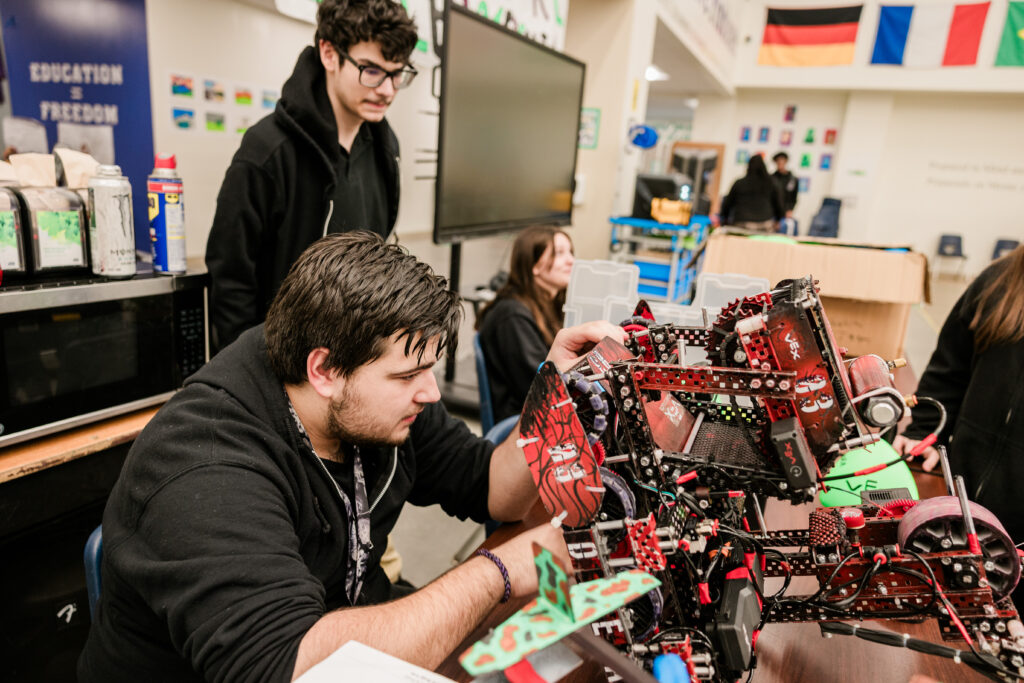What are charter schools?
Charter schools are unique public schools that are allowed the freedom to be more innovative while being held accountable for advancing student achievement. Because they are public schools, they are:
• Open to all children;
• Do not charge tuition; and
• Do not have special entrance requirements.
The core of the charter school model is the belief that public schools should be held accountable for student learning. In exchange for this accountability, school leaders should be given the freedom to do whatever it takes to help students achieve and should share what works with the broader public school system so that all students benefit.
In the early 1990s, a small group of educators and policymakers came together to develop the charter school model. Minnesota’s legislature passed the first charter law in 1991, and the first charter school opened in 1992.

Why Charter Schools?

All children should have the opportunity to achieve at a high level, and charter schools are meeting that need:
• Charter schools are some of the top-performing schools in the country.
• Charter schools are closing the achievement gap. They are raising the bar of what’s possible—and what should be expected—in public education.
• A higher percentage of charter students are accepted into a college or university.
How do charter schools work?
Charter schools foster a partnership between parents, teachers, and students. They create an environment in which parents can be more involved, teachers are allowed to innovate, and students are provided the structure they need to learn. Some specific examples of how charter schools are working to improve student achievement include:
• Adjusting curriculum to meet student needs. A charter school can break up the day to provide students with more time on the core subjects they need most. Charter school teachers have a say in the curriculum they teach and can change materials to meet students’ needs.
• Creating a unique school culture. Charter schools build upon the core academic subjects by creating a school culture or adopting a theme. For example, charter schools may focus on Science Technology Engineering or Math (STEM) education, performing arts, college preparation, career readiness, language immersion, or meeting the needs of dyslexic students — just to name a few.
• Developing next-generation learning models. Charter schools are rethinking the meaning of the word “classroom.” In Hawaii, students learn biology with the sky as their ceiling and the ocean as the classroom. Other schools combine online classroom time with classroom time in a physical school building. Excellent charter school networks like KIPP and Uncommon Schools are codifying how to develop an excellent teacher.
Learn more here.

Purpose of Charter Schools

The purpose of “South Carolina Charter Schools Act of 1996” is to:
(1) improve student learning;
(2) increase learning opportunities for students;
(3) encourage the use of a variety of productive teaching methods;
(4) establish new forms of accountability for schools;
(5) create new professional opportunities for teachers, including the opportunity to be responsible for the learning program at the school site;
(6) assist South Carolina in reaching academic excellence; and
(7) create new, innovative, and more flexible ways of educating children within the public school system, with the goal of closing achievement gaps between low-performing student groups and high performing student groups.
Who Can Sponsor a Charter School in South Carolina?
In South Carolina, applications to start new schools may be made to the following entities:
(a) A local School District in which the proposed school is located
(b) The South Carolina Public Charter School District
(c) A public or independent institution of higher learning that is registered as a Sponsor with the South Carolina Department of Education.
The South Carolina State Department of Education received the Charter Institute at Erskine’s registration to sponsor Charter Schools in May of 2017. The Charter Institute reviews applications for new charters, grants charters, and oversees the accountability and public stewardship of the schools in the Institute’s profile.
